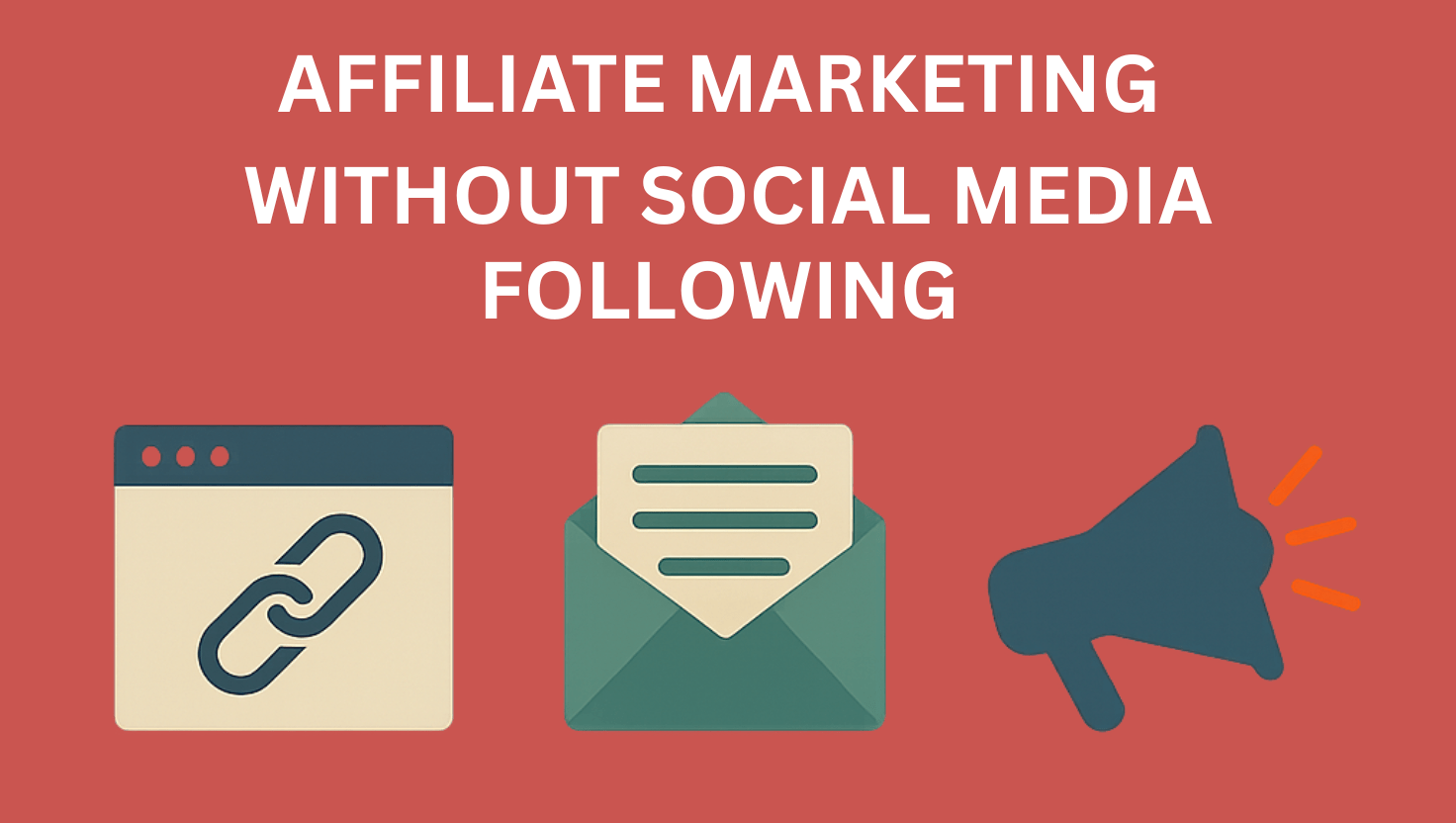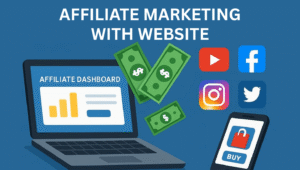You are watching a YouTube video on making money online, and some random guy’s video pops up, “How I make $10,000 in affiliate marketing,” after seeing your feelings expressed and thinking you have a massive following, which is why you earn this much commission.
What if you’re a million Americans who watch paint dry and then make dance TikTok, and you have only 3 followers on Instagram, of which 2 of them if your mom and the other is your fake account.
Here’s the plot twist nobody talks about: Doing affiliate marketing without social following is definitely possible. You don’t need a single follower to make a 6-figure affiliate business.
You think that Jay is crazy, but most successful affiliates make serious commission while influencers are arguing in the comment section.
Let’s jump right into it.
Why You Don’t Need Social Media for Affiliate Success

The Dirty Secret About Social Media Marketing
Online gurus won’t tell you this: massive followings aren’t the only way—or even the best way—to make affiliate commissions.
Think of social media as renting an apartment. You’re at the mercy of the landlord (Instagram, Facebook, TikTok). One algorithm change, and you’re out of business.
Building affiliate marketing without social media? That’s like owning your own property. You control everything.
Why Going Solo Works Better
No Algorithm Stress. You won’t lose sleep over Instagram’s latest algorithm changes or wonder why your reach suddenly dropped to zero.
Higher Conversion Rates People who find you through search are actively looking to solve a problem or make a purchase—they’re much more likely to buy.
Long-term Stability: Your content works for you 24/7, year after year, generating passive income while you sleep.
Less Competition. While everyone fights for attention on social media, you’re building something sustainable that compounds over time.
Want to start affiliate marketing, but you’re confused about where to start? Affiliate marketing for beginners complete step-by-step guide.
Affiliate Marketing Without Social Media Following: Strategies That Work
Strategy 1: Build a Profitable Niche Blog
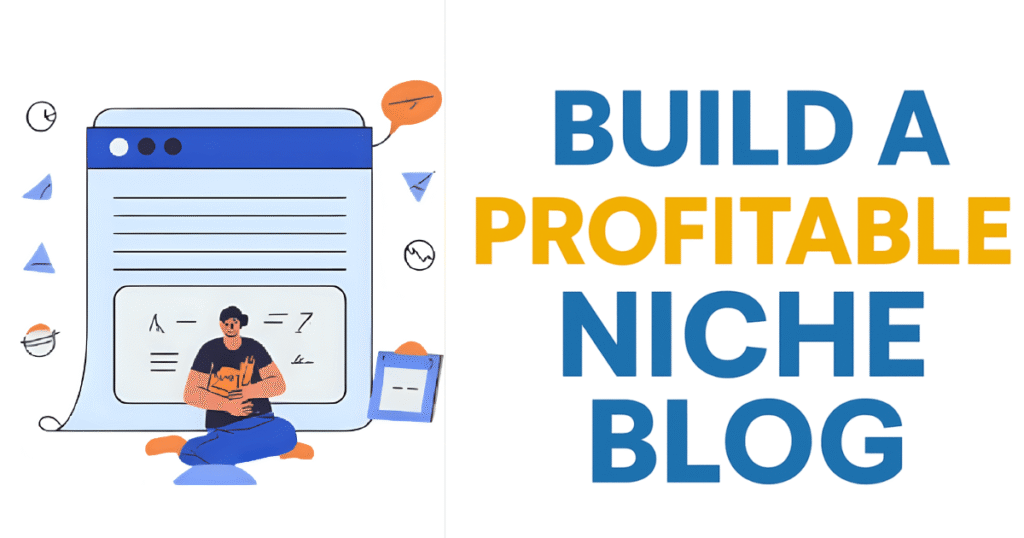
Starting a niche blog is the most reliable way to earn affiliate commissions without any social media following. You’ll create valuable content around a specific topic, making it easier to attract long-term visitors who trust your recommendations.
Why Blogging Works for Affiliate Marketing
Evergreen Traffic High-quality blog posts rank on Google and bring visitors for months or even years after publication.
Scalable Growth Once you set up your website properly, it grows passively with consistent content creation.
Authority Building A well-designed blog establishes you as an expert in your niche, dramatically increasing conversion rates on affiliate links.
Platform Ownership Unlike social media, you’re not subject to algorithm changes. You own your website and control your destiny.
Step-by-Step Blog Setup Guide
Step 1: Choose Your Profitable Niche
Your niche should be the intersection of three factors:
- Your interests or expertise
- Market demand
- Available affiliate opportunities
Examples of profitable niches:
- Personal finance and investing
- Health and wellness supplements
- Home improvement and tools
- Technology and software reviews
- Online education and courses
Tools for niche research:
- Google Trends (free)
- Ubersuggest or Ahrefs (keyword research)
- Amazon Associates (check available products)
Step 2: Set Up Your Professional Blog
Domain Name Selection: Don’t waste months choosing the perfect domain. Pick something related to your niche and move forward. You can always rebrand later.
- Buy domains from Namecheap or GoDaddy ($5-15/year)
- Choose .com if available
- Keep it short and memorable
Web Hosting You need reliable hosting to store your website files:
- Beginners: Bluehost or SiteGround ($3-8/month)
- Advanced: WP Engine or Kinsta (faster, more expensive)
Content Management System: Install WordPress—it’s beginner-friendly and powers 40% of all websites.
Theme Selectio:n Choose lightweight, SEO-friendly themes:
- Astra (free and premium versions)
- GeneratePress (fast loading)
- Kadence (modern design)
Step 3: Create Essential Website Pages
Before writing blog posts, create these foundational pages:
- Home page (clear value proposition)
- About page (build trust and authority)
- Privacy policy (legal requirement)
- Affiliate disclosure (FTC compliance)
- Contact page (builds credibility)
Step 4: Write Affiliate-Focused Content
Create a content mix that serves your audience while promoting relevant products:
| Content Type | Purpose | Example |
| Informational (60%) | Build audience and trust | “Complete Guide to Email Marketing” |
| Commercial (30%) | Product comparisons and reviews | “Mailchimp vs ConvertKit: Which is Better?” |
| Transactional (10%) | Direct product promotion | “Best Email Marketing Tools for 2025” |
Content Ideas That Convert:
- Product reviews and comparisons
- “Best of” lists in your niche
- How-to tutorials using specific tools
- Problem-solving guides
- Case studies and results
Step 5: Master SEO for Free Traffic
Search Engine Optimization brings qualified visitors who are actively searching for solutions.
Keyword Research Process:
- Use Ubersuggest, Ahrefs, or Google Keyword Planner
- Target long-tail keywords with buying intent:
- “Best protein powder for weight loss”
- “How to start affiliate marketing without a website”
- “Mailchimp alternatives for small business”
On-Page SEO Checklist:
- Include target keyword in title, URL, and first 100 words
- Use H2 and H3 headings with related keywords
- Add internal links to other relevant blog posts
- Write compelling meta titles and descriptions
- Optimize images with descriptive alt text
- Include a clear call-to-action with affiliate links
Content Quality Standards:
- Write in-depth, helpful content that solves real problems
- Break up text with bullet points, images, and subheadings
- Aim for comprehensive coverage, not just word count
- Include personal experiences and honest opinions
- Update content regularly to maintain freshness
Technical SEO Basics:
- Ensure mobile-friendly design
- Optimize page loading speed (use Google PageSpeed Insights)
- Create an XML sitemap
- Set up Google Search Console
- Use SSL certificate (https://)
Strategy 2: Use Pinterest as Your Traffic Engine
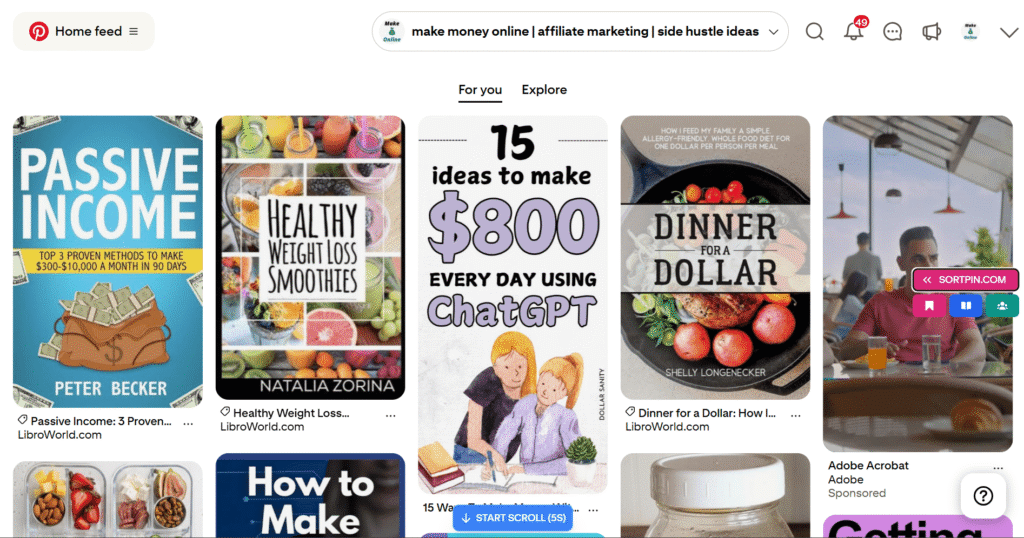
Pinterest isn’t just social media—it’s a visual search engine that can drive massive, long-term traffic to your affiliate content. Unlike other platforms, Pinterest pins have a much longer lifespan, continuing to drive traffic months after posting.
Why Pinterest Works for Affiliate Marketing
Search-Based Platform People use Pinterest to find solutions, making them more likely to click through and purchase.
Long Content Lifespan Pins can go viral months or even years after posting, unlike social media posts that disappear quickly.
High-Quality Traffic Pinterest users are often in a buying mindset, researching products and solutions.
Tier-One Traffic Pinterest delivers visitors primarily from the US, Canada, and other high-value countries.
Pinterest Strategy That Drives Traffic
Step 1: Set Up Your Pinterest Business Account
Create a business account (not personal) to access:
- Pinterest Analytics
- Rich Pins feature
- Advertising options
- Scheduling tools
Profile Optimization:
- Use keywords in your username and bio
- Include your website URL
- Choose a professional profile photo
- Write a keyword-rich description
Step 2: Master Pinterest Keyword Research
Pinterest works like Google—people search for specific solutions and ideas.
Keyword Research Process:
- Type your main topic in Pinterest search bar
- Note the auto-complete suggestions
- Check trending keywords in your niche
- Use Pinterest Trends tool for seasonal content
Example keywords for affiliate marketing niche:
- “Passive income ideas”
- “Work from home jobs”
- “Affiliate marketing tips”
- “Online business ideas”
Step 3: Create Strategic Board Structure
Organize your Pinterest profile with keyword-optimized boards:
Example board structure for affiliate marketing:
- Affiliate Marketing Tips
- Passive Income Strategies
- Work From Home Ideas
- Online Business Tools
- Email Marketing Tips
Board Optimization:
- Use keywords in board titles and descriptions
- Pin consistently to each board
- Include a mix of your content and others’ content
- Keep boards focused on specific topics
Step 4: Design High-Converting Pins
Forget cute, aesthetic pins—focus on pins that drive clicks and traffic.
High-Performing Pin Formula:
- Vertical format: 1000x1500px (Pinterest’s preferred ratio)
- Bold headline: Include keywords and benefits
- Readable font: Easy to read on mobile devices
- Strong contrast: Dark text on light background (or vice versa)
- Clear value proposition: What will they learn/gain?
- Call-to-action: “Click to read,” “Learn more,” “Get the guide”
Pin Design Tools:
- Canva (templates specifically for Pinterest)
- Adobe Express (free version available)
- PicMonkey (Pinterest-focused features)
Step 5: Implement a Consistent Pinning Strategy
Consistency beats frequency on Pinterest. It’s better to pin 5 high-quality pins daily than 20 low-quality pins sporadically.
Optimal Pinning Schedule:
- Frequency: 5-10 pins per day
- Timing: Use Pinterest Analytics to find when your audience is active
- Mix: 80% others’ content, 20% your own content
- Fresh pins: Create new pins for old blog posts regularly
Pinterest Scheduling Tools:
- Tailwind (Pinterest-approved)
- Later (built-in Pinterest scheduler)
- Buffer (multi-platform scheduling)
Strategy 3: Build Your Email List (Your Most Valuable Asset)
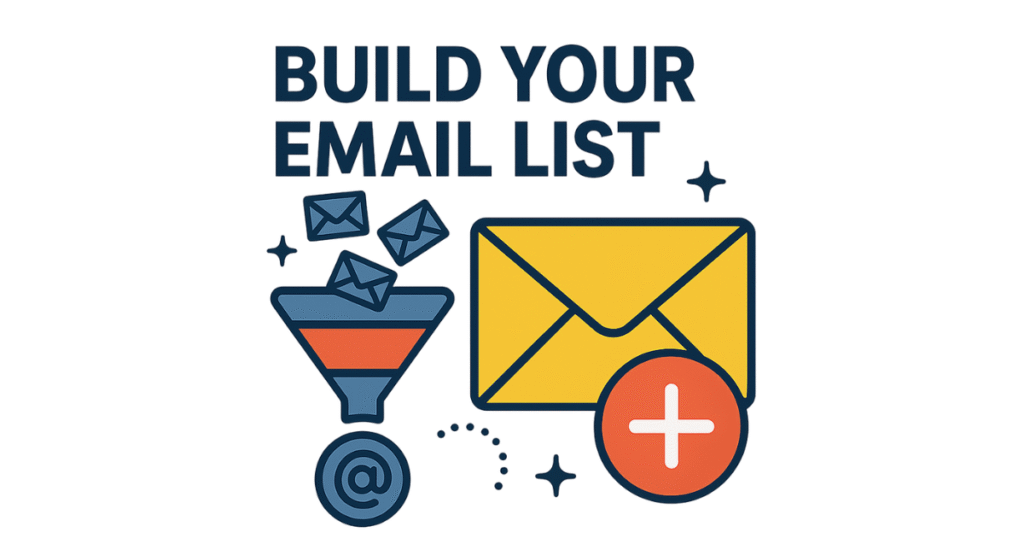
When I started affiliate marketing, I focused solely on social media. After two months of work, an algorithm change killed my reach overnight. But I had started building an email list, which saved my business during the “algorithm apocalypse.”
Why Email Marketing Beats Social Media
Direct Communication You own your email list—no platform can take it away or limit your reach.
Higher Conversion Rates Email subscribers are 3x more likely to purchase than social media followers.
Relationship Building Email allows for deeper, more personal communication than social posts.
Predictable Income With a responsive email list, you can generate sales on demand.
The Email Marketing System That Converts
Quality trumps quantity in email marketing. I’d rather have 100 engaged subscribers than 10,000 who delete my emails immediately.
Week 1-2: Build Trust and Authority
Welcome Sequence Goals:
- Introduce yourself personally
- Share your background and expertise
- Explain why you recommend certain products
- Set expectations for future emails
- Deliver immediate value
Example welcome sequence:
- Email 1: Welcome + free resource delivery
- Email 2: Your story and why you started
- Email 3: Your biggest mistake and lesson learned
- Email 4: Free case study or tutorial
- Email 5: Your content philosophy and what’s coming
Week 3-4: Provide Massive Value
Focus entirely on helping your subscribers without selling anything:
- Free guides and checklists
- Personal experiences and lessons
- Industry insights and trends
- Honest reviews (including negative aspects)
- Behind-the-scenes content
Week 5+: Make Natural Recommendations
When you do promote affiliate products:
- Explain exactly why this product solves their specific problem
- Share your personal experience with the product
- Include both pros and cons honestly
- Provide bonuses or special deals when possible
- Make it feel like advice to a friend
Email List Building Strategies
Lead Magnets That Convert:
- Checklists and templates
- Free courses or mini-trainings
- Exclusive discounts or bonuses
- Resource libraries
- Assessment tools or quizzes
Opt-in Form Placement:
- End of blog posts (highest converting)
- Sidebar widgets
- Header/navigation bar
- Exit-intent popups
- Within content (after value is provided)
Email Service Providers:
- Beginners: Mailchimp (free up to 2,000 subscribers)
- Intermediate: ConvertKit (creator-focused features)
- Advanced: ActiveCampaign (advanced automation)
Common Mistakes That Kill Affiliate Success
Mistake #1: Trying to Be Everything to Everyone
I see this constantly—someone starts a “lifestyle” blog and writes about everything from cryptocurrency to pet care.
The Fix: Pick a specific niche and dominate it. You can always expand later, but start narrow. It’s easier to become known as “the affiliate marketing expert” than “the person who writes about everything.”
Mistake #2: Focusing Only on High-Commission Products
What’s better: selling one item for $100 commission or ten items for $15 commission each?
The math seems obvious, but here’s what isn’t: that $15 item might be 10 times easier to sell. Lower-priced products often have:
- Higher conversion rates
- Less buyer hesitation
- More frequent purchases
- Better customer lifetime value
Mistake #3: Not Building an Email List from Day One
This breaks my heart every time I see it. You drive traffic to your website, they read your content, maybe click your affiliate links… and then they’re gone forever.
Every visitor who doesn’t join your email list is a missed opportunity for a lifetime relationship.
Start collecting emails from day one, even if you only get one subscriber per week initially.
Mistake #4: Promoting Products You’ve Never Used
Your reputation is worth more than any commission check. Only promote products you’ve actually used and believe in. Your audience will sense authenticity (or lack thereof) immediately.
Mistake #5: Neglecting Mobile Optimization
Over 60% of web traffic comes from mobile devices. If your website isn’t mobile-friendly, you’re losing sales before people even see your affiliate links.
Realistic Income Expectations and Timeline
Let’s talk real numbers, because I’m tired of the “I made $100K in my first month” nonsense that’s everywhere online.
Realistic Affiliate Marketing Timeline
| Timeframe | Expected Income | Key Milestones |
| Months 1-3 | $0-100 | Website setup, first content published, learning fundamentals |
| Months 4-6 | $100-500 | Traffic starts growing, first affiliate sales, email list building |
| Months 7-12 | $500-2,000 | Steady growth, multiple traffic sources, content momentum |
| Year 2 | $2,000-5,000+ | Compound growth, established authority, diversified income |
| Year 3+ | $5,000-10,000+ | Multiple income streams, passive revenue, potential scaling |
Important notes:
- These numbers assume you treat this as a real business, not a side hobby
- Results vary based on niche, effort, and strategy execution
- Some people see faster growth, others take longer
- Consistency and patience are more important than perfection
Factors That Accelerate Success
Content Quality and Frequency Publishing 2-3 high-quality, SEO-optimized posts per week significantly faster than sporadic posting.
Niche Selection Some niches (personal finance, health, technology) have higher affiliate commissions and easier monetization.
SEO Knowledge Understanding how to rank content in Google can 10x your traffic and income.
Email Marketing Skills A responsive email list can generate income on demand and increase lifetime customer value.
Essential Tools for Affiliate Marketing Success
Here are the tools that separate successful affiliate marketers from wannabes. I’m focusing on essentials, not “nice-to-haves.”
Content Creation Tools
Writing and Editing:
- Grammarly Premium: Non-negotiable for professional content
- Jasper AI: Great for overcoming writer’s block and generating ideas
- Hemingway Editor: Improves readability and clarity
Design and Graphics:
- Canva Pro: Create professional graphics without design skills
- Unsplash/Pexels: Free high-quality stock photos
- Figma: Advanced design tool (free version available)
SEO and Analytics Tools
Keyword Research:
- Ahrefs: Comprehensive SEO toolset (paid)
- Ubersuggest: Budget-friendly alternative
- Google Keyword Planner: Free but basic
Analytics and Tracking:
- Google Analytics: Essential for understanding your audience
- Google Search Console: Shows how people find your content
- Hotjar: See exactly how visitors interact with your site
Email Marketing Platforms
Beginner-Friendly:
- Mailchimp: Free up to 2,000 subscribers
- ConvertKit: Creator-focused features and automation
Advanced Options:
- ActiveCampaign: Powerful automation and CRM features
- Klaviyo: E-commerce focused with advanced segmentation
WordPress Tools and Plugins
Essential Plugins:
- Yoast SEO: On-page SEO optimization
- MonsterInsights: Google Analytics integration
- OptinMonster: Lead generation and email capture
- ThirstyAffiliates: Affiliate link management
- WP Rocket: Speed optimization
Starting on a Budget
You can begin with minimal investment:
- Domain: $10-15/year
- Hosting: $5-10/month
- Email marketing: Free (up to certain subscriber limits)
- Design: Canva free version
- SEO: Google’s free tools
Invest in paid tools as your income grows, not before.
Conclusion
Can you build a successful affiliate marketing without any social media following? Not only can you do it – you might be better off doing it this way.
Social media is noisy, unpredictable, and exhausting. Building your business through SEO, email marketing, and genuine relationship-building is quieter, but it’s also more sustainable and often more profitable.
You don’t need to be the next big influencer. You just need to be helpful, consistent, and patient. The rest will take care of itself.
Ready to stop making excuses and start building? Your future self will thank you for starting today instead of “someday.”
If you’re starting from zero, expect 3-6 months before seeing meaningful traffic and sales. However, every month after that becomes easier as your content gains authority, your email list grows, and your expertise becomes more apparent.
Start with free versions of everything. WordPress.org, Google Analytics, Google Search Console, and Mailchimp’s free plan can take you far. Invest in paid tools as your income grows, not before.
You can literally start with just hosting costs—about $5-10 per month. Everything else can be added as you grow. Many six-figure affiliate businesses started with less than $100.
Promote products you actually use and believe in. Your reputation is worth more than any single commission check. Focus on products that genuinely solve problems for your audience.
Every niche has competition, but there’s always room for a unique voice and perspective. Focus on serving your audience better than anyone else, not on avoiding competition.
Master one traffic source first, then diversify. Trying to do SEO, email marketing, Pinterest, and paid ads simultaneously from day one is a recipe for doing everything poorly.
Extremely important. The FTC requires clear disclosure of affiliate relationships. Always include affiliate disclosures on pages with affiliate links. It’s not just legal compliance—it builds trust with your audience.

